JUNE 2025
It may be June now but I m going to tell you about a great day out I had last month and whether that
experience can be repeated or whether there should be a different day out? U3A Shrewsbury
branch asked Shropshire Churches Tourism Group if they could provide a day out, which would tell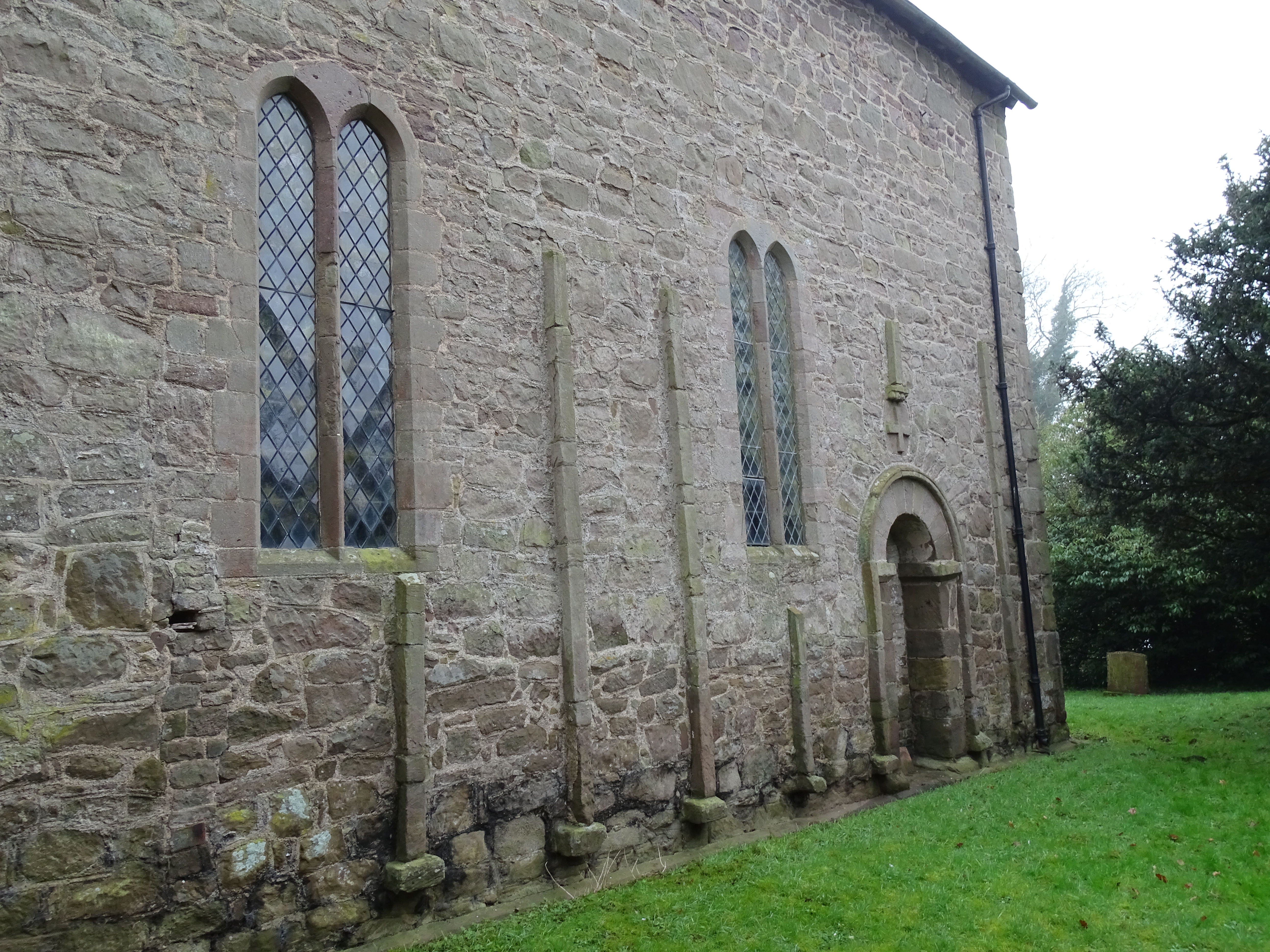
the students about something they might not know about. U3A is the University of the Third Age, so aimed at older people who want to keep their brains ticking over. There are several branches all over the county.
A meeting at SCTG headquarters debated a number of possible options and finally decided that it was time to big-up all those lovely churches with remnants of Anglo-Saxon buildings - we were spoilt for choice. What about Wrockwardine and Wroxeter asked one learned person? We all agreed a good choice, but what other places nearby could we visit. Suffice to say that after a lot of debate we finally came down on South Shropshire.
We had a great day out with coach driver Carl joining in too. We went and admired pilasters on the north and west walls of Stanton Lacy. When the original building was subsumed into the new one they added some columns, somehow they had heard they were all the rage in ancient Greece and Rome!
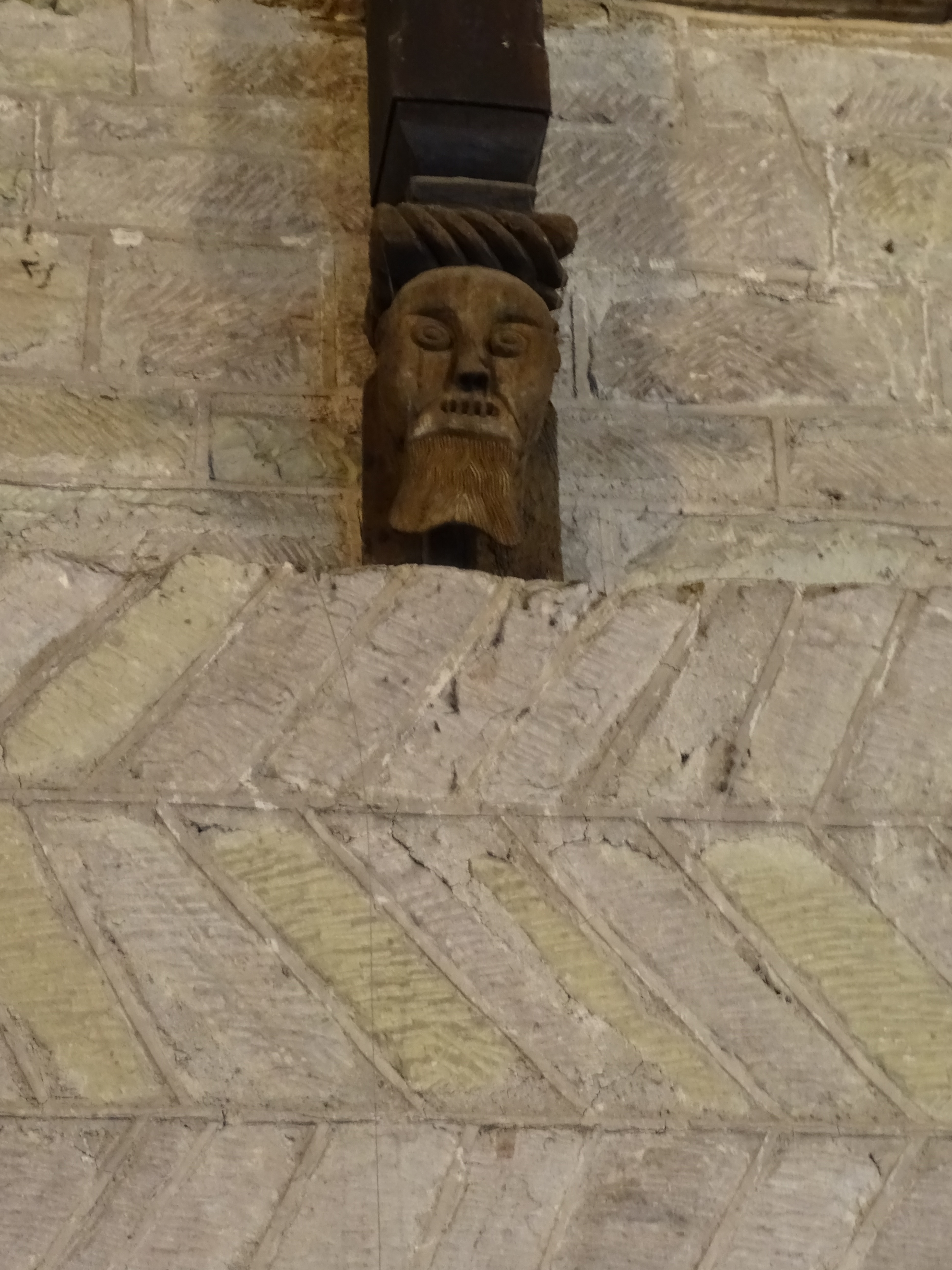
From there we scooted up to the Corvedale road and stopped off in Diddlebury , where herringbone brickwork was met with ‘oos’ and ‘ahs’ so amazing is it. We took time to walk around the outside of these 1000+ year old buildings and admired the stunning views of the beautiful county we live in.
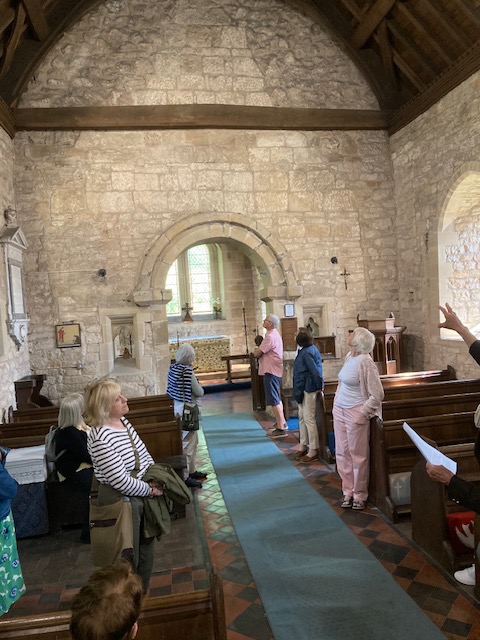
Lunch at The Swan was delicious and plenty of it. It was a quiet drive to Barrow church. This tiny building has a chancel (that’s the part of the building where the altar is) that is almost completely Anglo-Saxon. You can also see the outline on the chancel wall of how small the building was originally.

We ended our day in Much Wenlock and learned all about St Milburga. She was a very powerful Anglo- Saxon woman who became the second Abbess of the 2 monasteries, one for men and one for women, built in the 7 th century. The current remains in the town date from a later monastery, destroyed by Henry VIII.
We checked out the Holy Wells in the town too, although if you want to see
a more impressive display of water head to Stoke St Milborough - that’s what an Anglo-Saxon gush of holy water should look like!
With summer here now, this could make a good day out for you too. All the churches are open every day and welcome visitors.
Anni Holden Calver, Secretary of Shropshire Churches Tourism Group (SCTG)
www.discovershropshirechurches.co.uk
Trustee of Caring for God’s Acre and Churchyard Task Team cheerleader!
www.caringforgodsacre.org.uk
MAY 2025
As a trustee of Caring for God’s Acre, the national charity based in Shropshire, which looks after our ancient burial grounds, I am in one most weeks. The volunteers of the Churchyard Task Teams (CTT) are out and about in the north and south of the county, scything, making wood piles for small mammals, checking the dry stone walls are in good order, cutting back the brambles and anything else that needs doing under the professional eye of Alex, our leader.
It’s an enjoyable outing for us volunteers and pleasant at the tea and lunch break, is the chat between the volunteers. We were in Caynham Church last month and someone asked me how churches got their saint’s name. That particular church is dedicated to St Mary. As secretary of Shropshire Churches Tourism Group I can confidently tell you that that is the most popular dedication in the whole county. Three weeks later we were in Bromfield Church, also dedicated to St Mary.
It must have been very strange when stone buildings started appearing in our villages. Once William had conquered after his success at Hastings in 1066, he brought his French building knowledge with him and our churches still stand a thousand years later. St Mary reflects the historic allegiance to Mary, the mother of Jesus. St Peter comes next, Jesus’ right-hand man. But we have some unusual ones too. Cheswardine is dedicated to St Swithun, who was bit of a poster boy as Bishop of Winchester and after his death in 862. His tomb became a place of pilgrimage, miracles happened and he became a saint. There are 54 ancient dedications to him in England. Other unusual names are Gregory the Great at Morville, St Cuthbert at Clungunford, St Oswald in Oswestry and our very own Shropshire Saxon saint, St Milburga at Stoke St Milborough.
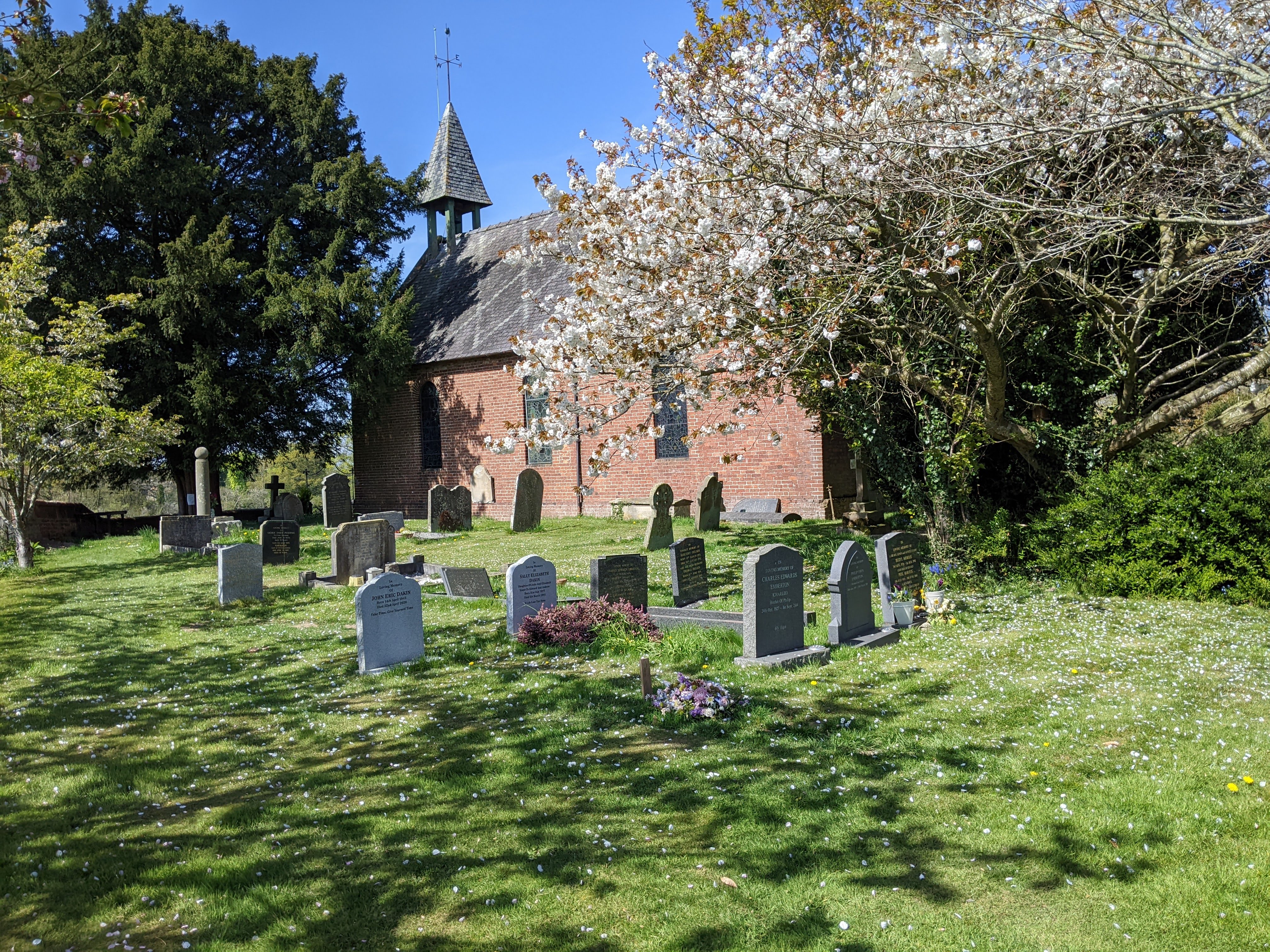
But it’s May now and I want to tell you about a whose feast day is 15th May. He has a unique dedication in the village of Petton, in Shropshire. Isadore was a farm labourer in a village near Madrid, in Spain. He worked there all his life until his death in 1130. He went to church each day and prayed as he worked the plough; holiday time meant a pilgrimage to a local shrine. Many miracles were attributed to him and, nearly 500 years later in 1615, the recovery of the King was attributed to him, a lowly labourer curing a king! He was made a saint and until the millennium no church dedication was Isadore. But Petton decided in 1999 that they would mark the millenium by finally giving their building a name - they chose the humble Isadore.
Anni Holden Calver, Secretary of Shropshire Churches Tourism Group (SCTG)
www.discovershropshirechurches.co.uk
Trustee of Caring for God’s Acre and Churchyard Task Team cheerleader!
www.caringforgodsacre.org.uk
Pic:-St Raphael and St Isidore, Petton
MONTHLY ARTICLE, APRIL 2025
“O to be in England now that April’s there” wrote the poet Robert Browning from his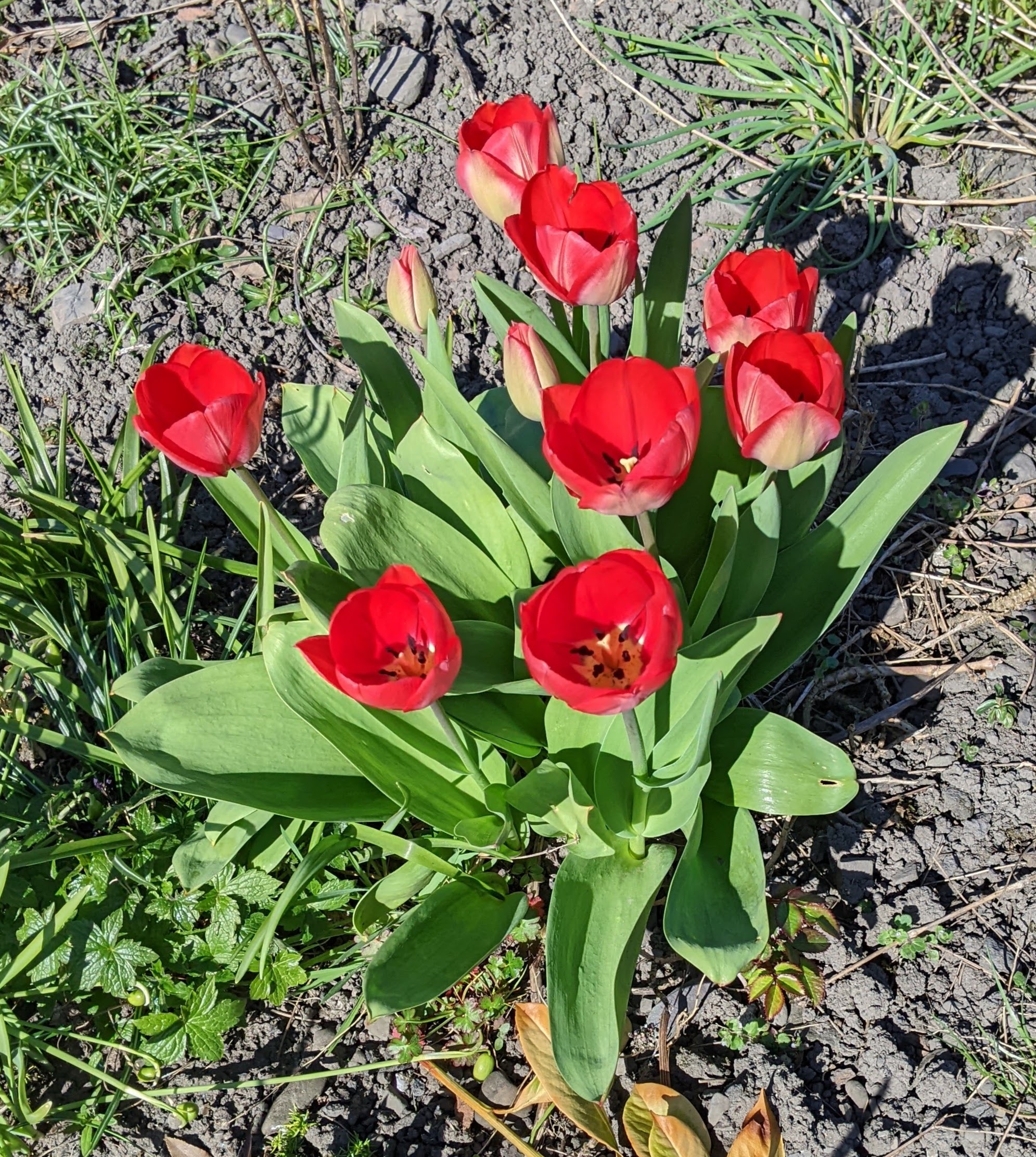 hideaway home in Italy, and I can understand his yearning. I know it’s a month most often associated with showers, although many of the old sayings are not so pessimistic (April wet, good wheat - April and May, key to the year etc). I’m not downhearted either as I think it can be a lovely month, warming up but not yet summer. There is lots of new growth in gardens and hedgerows and a stirring in the veg. patch too.
hideaway home in Italy, and I can understand his yearning. I know it’s a month most often associated with showers, although many of the old sayings are not so pessimistic (April wet, good wheat - April and May, key to the year etc). I’m not downhearted either as I think it can be a lovely month, warming up but not yet summer. There is lots of new growth in gardens and hedgerows and a stirring in the veg. patch too.
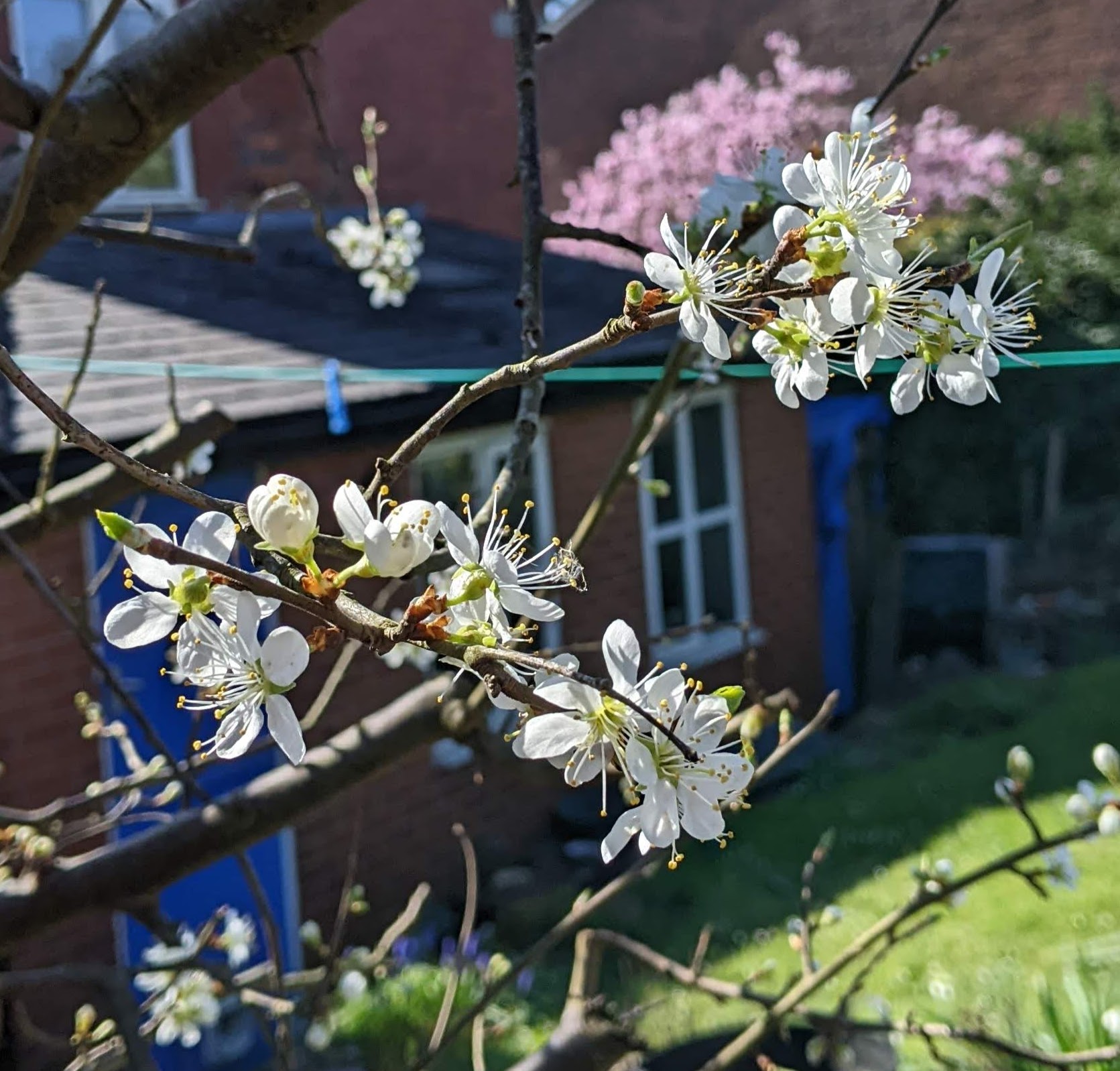 The month is dominated by Easter, a moving date between 22nd March and 25th April, all dependant on the moon! Easter is somewhat different now from the rather solemn religious rituals of my childhood, followed by the joy of Easter day and the chocolate eggs sitting at our places on the dining room table. But it was holiday time, a long weekend which still happens today, although with shops open every day, not a holiday for everyone.
The month is dominated by Easter, a moving date between 22nd March and 25th April, all dependant on the moon! Easter is somewhat different now from the rather solemn religious rituals of my childhood, followed by the joy of Easter day and the chocolate eggs sitting at our places on the dining room table. But it was holiday time, a long weekend which still happens today, although with shops open every day, not a holiday for everyone.
In medieval times and until the end of the 17th century, it was a holiday for everyone. Most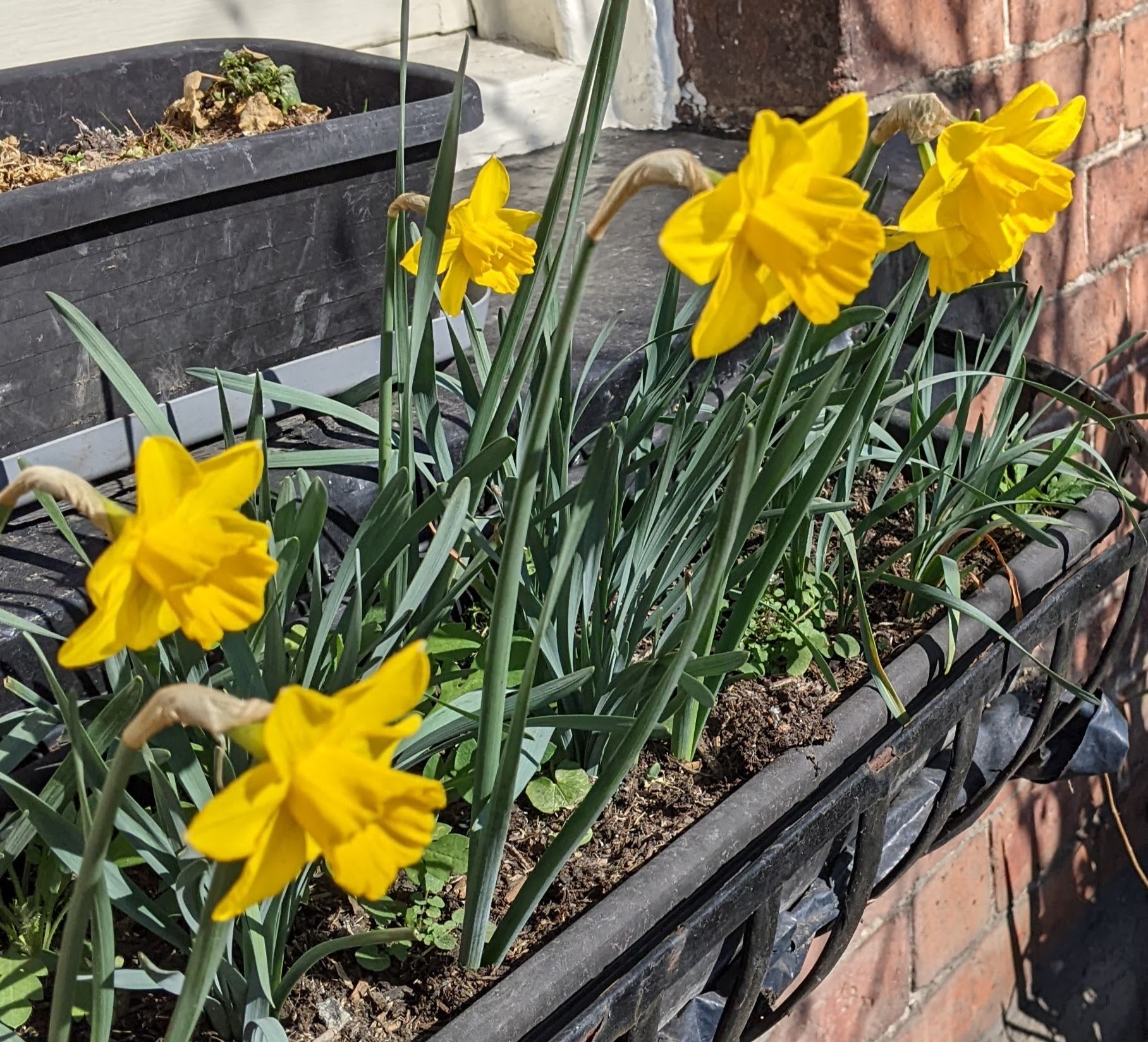 people worked on the land and looked after their animals, or worked for someone wealthier than them doing the hard stuff! Holidays were blesséd relief from the hard work needed to ensure there was enough food for the year.
people worked on the land and looked after their animals, or worked for someone wealthier than them doing the hard stuff! Holidays were blesséd relief from the hard work needed to ensure there was enough food for the year.
Hocktide was the post Easter holidays, which probably dates back before 1066, that moment in history, which was to mark a big change in life, customs and building. But Hocktide, and all the fun associated with it, survived until the late 17th century. It raised money for the church so you might like to rekindle this as a fundraiser for your church now!
 Hocktide took place on the Monday and Tuesday after Low Sunday - the one after Easter Day. Hock-Tuesday was a rent day, along with Michaelmas in September, two very important days in the year. A lot of drinking, eating and dancing was enjoyed, perhaps sometimes a little too jolly. Henry VIII, having sorted the dissolution of the monasteries and a bit more, banned the day as he thought it just encouraged public disorder. What a killjoy that man was. Fortunately, his daughter Elizabeth I reinstated the traditions in 1575.
Hocktide took place on the Monday and Tuesday after Low Sunday - the one after Easter Day. Hock-Tuesday was a rent day, along with Michaelmas in September, two very important days in the year. A lot of drinking, eating and dancing was enjoyed, perhaps sometimes a little too jolly. Henry VIII, having sorted the dissolution of the monasteries and a bit more, banned the day as he thought it just encouraged public disorder. What a killjoy that man was. Fortunately, his daughter Elizabeth I reinstated the traditions in 1575.
So what about that fundraiser? On Hock-Monday, the local men would grab the women and demand a kiss to release them. On Hock-Tuesday it was the women’s turn, but they were a bit cleverer than their men folk and having captured them, demanded money for their release, the sum raised given to the Church for its upkeep for the next year. I am not sure that men and women tying each other up would be acceptable in April 2025 but you might think it could work!!! Let me know if you take up this challenge.
Anni Holden Calver, Secretary of Shropshire Churches Tourism Group (SCTG)
www.discovershropshirechurches.co.uk
Trustee of Caring for God’s Acre and Churchyard Task Team cheerleader!
www.caringforgodsacre.org.uk
MONTHLY ARTICLE FOR MARCH
This month I bring you tidings of good news. By the end of March, there will be a brand new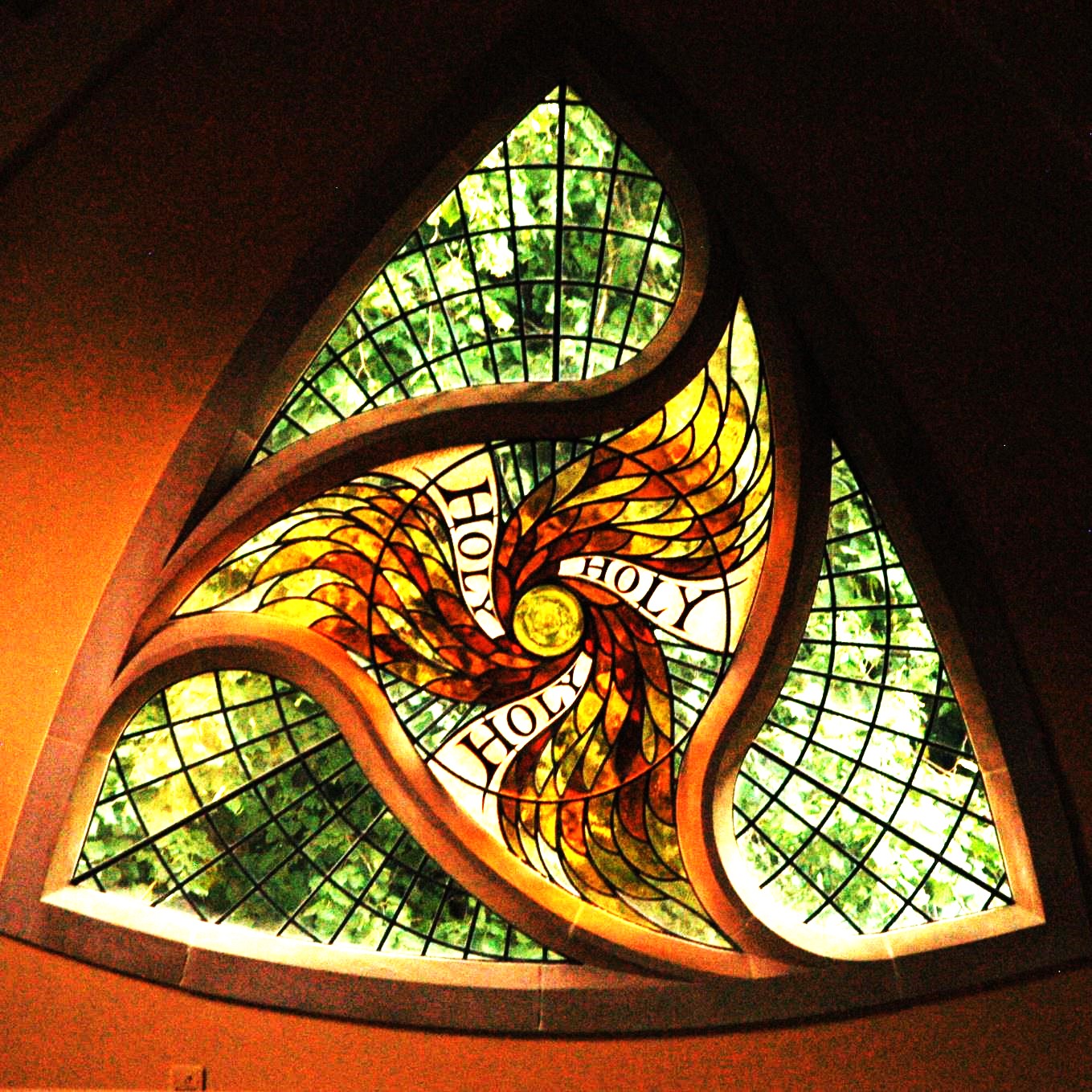
brochure, produced by Shropshire Churches Tourism Group. And this time a record number of churches have signed up for the organisation, which is only 15 years old, but going from strength to
strength.
So what are you going to see? The new brochure features 113 church buildings from all around the County. These are churches that are keen to welcome visitors to their buildings, historic places that they want to show off. Tourism is one of the biggest industries in Shropshire and vital to the local economy. Our church spires, a built part of the stunning countryside in which we live, remind visitors
what a lot of history has happened in our part of England.
We have more news too. For the first time in SCTG history, we will be running our very own coach trip. In early May we will be taking members of U3A Shrewsbury on a trip called “Opening up Anglo-
Saxon Shropshire”. We hope this will be the first of many more days out. Keep a close eye on this website.
So it’s quite an exciting time for SCTG, and all our member churches. The Annual General Meeting is
on the 27th of March at Meole Brace Church, on the South West edge of Shrewsbury. The church has
added the Trinity Centre to its stunning Victorian building, and the centre is perfect for the AGM,
being warm and comfortable with enough space to dole out bundles of new brochures. If your
church is a member please come along, pick up the new guide and meet some nice people and get
some ideas about what you can do for tourists. It all starts at 10.15am.
The meeting will be more than just elections - although we have room for more people on the small
executive that keeps SCTG going and progressing. Tourism and tourist questions can be answered;
ideas exchanged; and there will be a short fun quiz for those who like a good test of knowledge.
With news of our own created Saxon Trail, we hope some of you will have ideas for trails including
your buildings.
If your local church is a member, you should be able to pick up a new guide by 1 st April. Thirty
thousand are printed (yes 30,000!) every 3 years. You will also find them in Tourist Information
Centres and local tourist sites. Our historic buildings are part of this industry and as SCTG we are
proud of our contribution. And remember, visitors do not have to come from away - you can be a
local tourist and be just as welcome. Make 2025, the year you discover Shropshire Churches.
Anni Holden Calver, Secretary of Shropshire Churches Tourism Group (SCTG)
www.discovershropshirechurches.co.uk
Trustee of Caring for God’s Acre and Churchyard Task Team cheerleader!
www.caringforgodsacre.org.uk
Pic:- Window in the Trinity Centre, Holy Trinity, Meole Brace.
MONTHLY ARTICLE FOR FEBRUARY
I had a really lovely surprise on New Years Day. Not a warm day, but a brief walk
down the garden and I spotted a small group of snowdrops, under the hedge. They
had a bit to go before their delicate while petals were slightly spread in that shy way
that snowdrops have - not showing off but what a treat to see.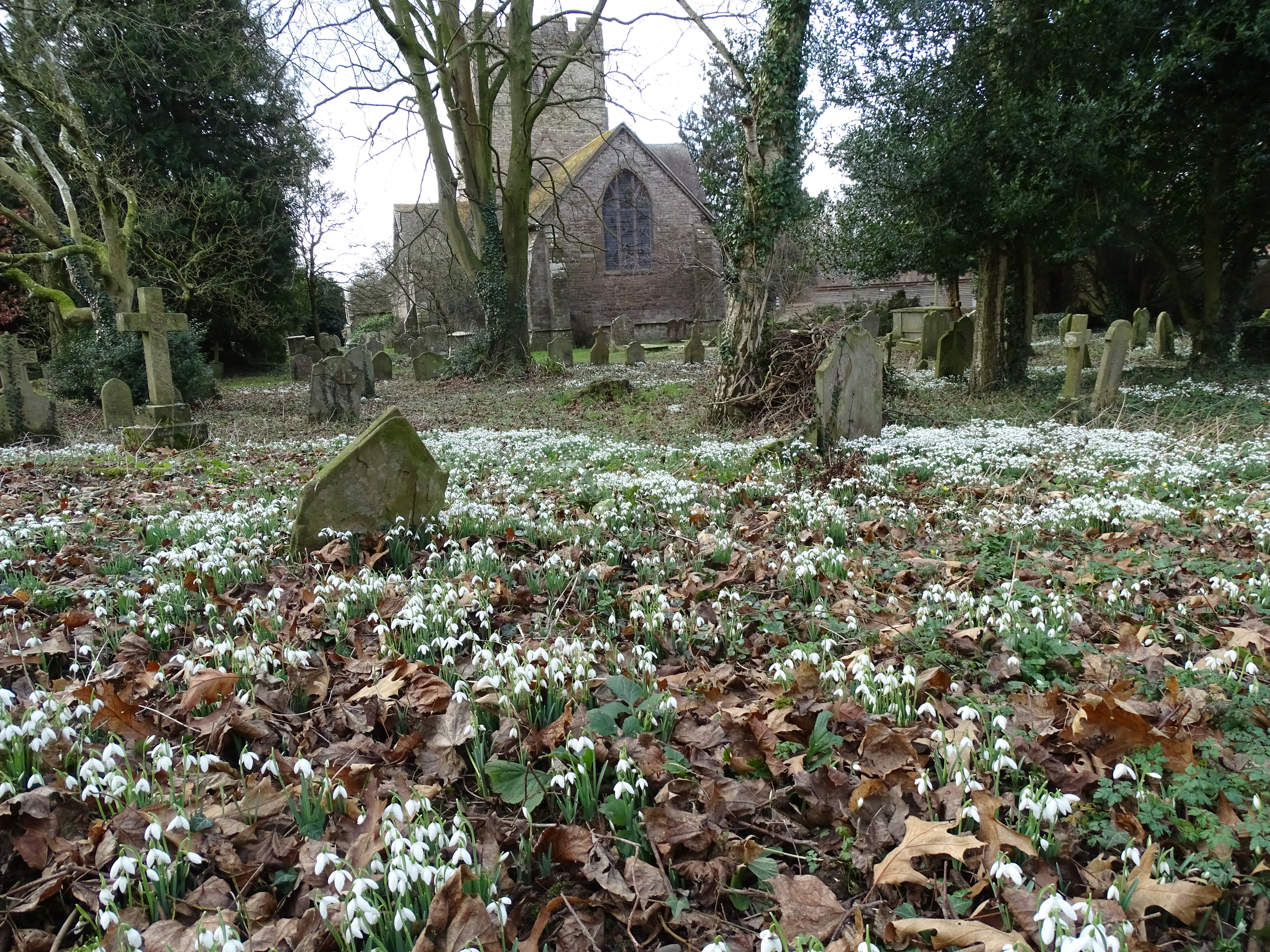
Now into February and this tiny little flower is in its element. “Thou fairy gift from summer, Why art thou blooming now?” asked the scandalous 19th century poet, Letitia Elizabeth Landon, in her poem, The Snowdrop. A good question, as you would think any sensible plant would wait until the weather was warmer until it flowered. Instead the plant turns many a churchyard into fairyland in February.
Several churches in the County have “Snowdrop Weekends” this month, usually
about the 3 rd weekend when the flowers are at their very best and a stunning sight, a carpet of white amongst the gravestones.
The Latin name for the snowdrop family or genus is “galanthus”, finally agreed on in
1753, when botany was coming into its own science. But snowdrops were known
about in ancient Greece, by the 4 th century BCE. The Greek author, Theophrastus
was describing the snowdrop and other similar flowers in such a way that, in the 21 st
century, we could identify what he was describing - when translated from ancient
Greek, definitely not my forte!
Galanthus nivalis is the best-known and most widespread of snowdrops, and it is
native to a large area of Europe, stretching from the Pyrenees in the west, through
France and Germany to Poland in the north, Italy, northern Greece, Bulgaria,
Romania, Ukraine, Russia and Turkey. Several other species are found in the
Middle East, Jordan, Lebanon Syria and Palestine. Most Galanthus species grow
best in woodland so head to St Peter’s church in Stanton Lacy, just across Ludlow
Racecourse, off the A49, for the best display in Shropshire! But your village churches
may have them too.
In colder countries, snowdrops flower later than the January and February of
England. The Russian composer, Tchaikovsky, wrote 12 piano pieces, one for each
month of the year, and the next part of the name is something associated with that
month and April is snowdrop!
Anni Holden Calver, Secretary of Shropshire Churches Tourism Group (SCTG)
www.discovershropshirechurches.co.uk
Trustee of Caring for God’s Acre and Churchyard Task Team cheerleader!
www.caringforgodsacre.org.uk
JANUARY
It’s the first month of the year, January, named after the Roman God, Janus. If you are looking for someone who is good at everything and knows everything , then Janus is your man.
someone who is good at everything and knows everything , then Janus is your man.
In ancient times, the Romans had a god or goddess for everything. Ceres was the goddess of harvests, protector of the common people, while Mars was the god of war, worshipped by soldiers; Neptune the god of the waters and seas, controller of winds, storms and, for some reason which I cannot work out, horses. There are lots more From Apollo to Vulcan and 40 or so others in between.
So where does our man of the month fit in? Janus is the god of beginnings, of gates, doorways, passages, transitions, time , duality and endings. That list is a mixture of the real and the nebulous, I think! Pictures (and coins )of this god show a man of two faces, one looking forward - into 2025 perhaps - and the other looking backward to time already past. And having 2 faces was helpful for a busy person, enabling him to see inside and outside and forwards and backwards without having to turn round.
Janus represented the middle ground between both the abstract and the concrete realities of life and death. But he did not stop there. He took on board, beginnings and ends, youth and adulthood, war and peace (though I do wonder what mighty Mars thought about that?) rural and urban and barbarism and civilisation.
He was known and worshipped all through those years from BC753, when Romulus and Remus founded the city we know as Rome. They were the twin sons of Rhea Shiva, a vestal virgin who became pregnant by the great god Mars and the rest as they say is history, very dodgy history, but a really good story (perhaps I will tell you that another month).
Back to Janus who knowing everything was familiar with the twins’ story. Our ancient Romans believed Janus ruled over events in their lives , weddings, births and deaths. In Roman mythology, it was accepted that Janus was there at the beginning of the world. He guarded the gates of heaven. He was invoked in religious rites, during public sacrifices and was given offerings before any other Roman gods. At doorways between past and future, such as a change of jobs, he was honoured.
What he could see in 2025 we will never know but I can tell you that Caring for God’s Acre’s Churchyard Task Team (CTT) in January, will be in Hopesay on 7th, Stoke St Milborough 14th Hope Bagot on 28th and Bromfield on Feb 4th. They will also be planting trees with the National Trust on the Long Mynd and Stiperstones. Good news too from Shropshire Churches Tourism Group (SCTG) as it has a new brochure for 2025 handed out at the AGM on 26th March at Meole Brace Church on the southern edge of Shrewsbury.
Anni Holden Calver, Secretary of Shropshire Churches Tourism Group (SCTG)
www.discovershropshirechurches.co.uk
Trustee of Caring for God’s Acre and Churchyard Task Team cheerleader!
www.caringforgodsacre.org.uk
DECEMBER
When the red, red robin comes bob-bob-bobbing along, you know it must be nearly
Christmas. In an annual competition this lovely little bird, with its orange-red breast,
is consistently voted the most popular bird in the country.
I was reminded about Christmas and robins as I watched one of the 3 pairs of robins
in our garden. Yes, they are territorial but have carved it up between them and
respect each other’s space. The one that lives closest to the house has started
helping itself to the fish food which gets caught on the edge of the fish pond! I
watched this amazing activity while peeling vegetables at the kitchen sink, a task it
made much more interesting than usual.
For centuries, this tiny bird has been the symbol of good luck, happiness and
sometimes even as a messenger for lost, loved ones. There are tales stretching
back to Norse mythology where the robin is the protector from storms and lightning.
But historically, the robin has a good story to tell, especially when Christmas comes
around. I mean why does it have a super orange-red breast? There are several
suggestions, mostly tied up with Christianity but certainly not biblical!
Myth has it that after Jesus was born in a stable in Bethlehem, a fire was lit in order
to keep the Holy family and new baby warm. The local robin was concerned that the
heat might be too much for the infant so bravely spread his wings to protect him. The
fire scorched the robin’s breast an orange-red colour and all robins have been that
way ever since. A variation similarly claims the robin fluttered his wings to keep the
baby cool from the heat and thus his breast was scorched orange-red.
(Interesting fact: the robin’s breast was originally referred to as red because the
colour orange did not exist. And the redness of the robin is orangey (is that a word?).
The colour was first used as a colour in English in 1512 - named after the fruit which
had become popular in Europe).
 The reputation of the robin was enhanced even more in Victorian times when the
The reputation of the robin was enhanced even more in Victorian times when the
Post Office came into being. The men who delivered the letters in this amazing
revolution of its time were affectionately known as “robins”. Their uniform comprised
a bright red jacket. As the sending of cards at Christmas spread, the robin spread
likewise from the garden to featuring on the cards. What is not to like about a pretty
red breasted robin sitting on a holly tree in a snowy background.
How many of us will choose such a card this year, despite the dwindling numbers
sent these days. If you receive cards why not check how many robins you can spot.
Oh and do not forget to feed them if the weather gets tough too.
Anni Holden Calver, Secretary of Shropshire Churches Tourism Group (SCTG)
www.discovershropshirechurches.co.uk
Trustee of Caring for God’s Acre and Churchyard Task Team cheerleader!
www.caringforgodsacre.org.uk
November
The end of the year is nigh, or in modern English only 2 months to go and it will be 2025.
Remembrance is a focal point in November, the 11 th of the 11 th , and rightly so I think. But in days before WWI, the date meant a different thing altogether. The 11 th of November is the feast day St Martin de Tours. And in many parts of Europe you will find more churches
dedicated to him than any other saint.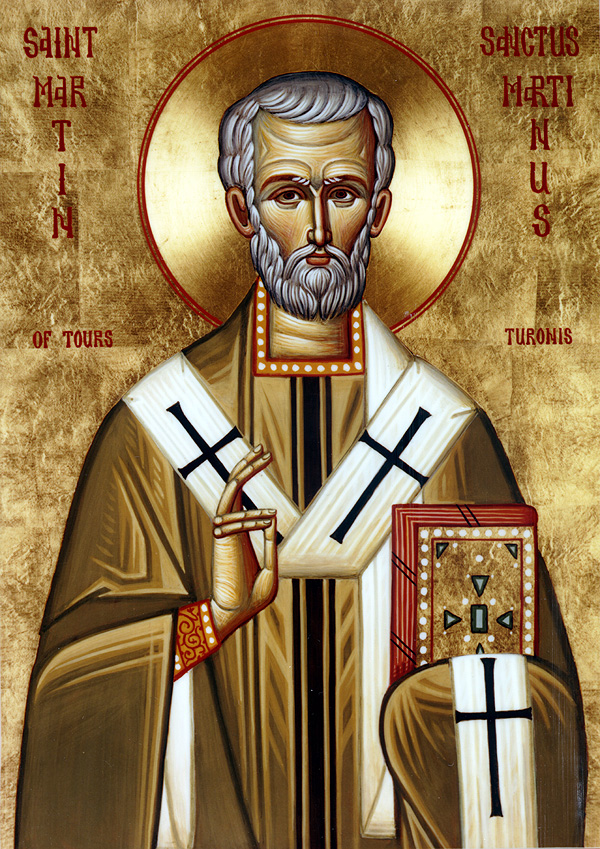
He was born in modern-day Hungary, sometime between 316 and 336 A.D. He is a saint we have details about not myths! Martin was a soldier, like his father. He became the first recorded conscientious objector when he refused to fight in a battle near the German city of Worms. When accused of cowardice, he offered to fight unarmed, but was saved by a truce.
He is most famous for cutting his cloak in two with his sword and sharing it with a beggar. He became a bishop by means of a trick, being called to visit a sick person.When he realised 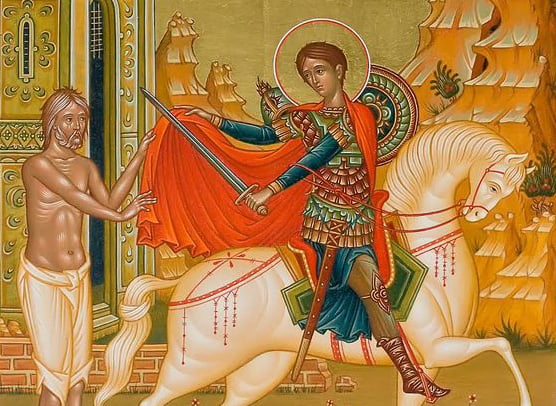 that it was a trick, he tried to hide, but was found and ordained, becoming a holy and hardworking bishop of Tours. He combated heresy, and founded a monastery. His biography was written by his contemporary, Sulpicius Severus.
that it was a trick, he tried to hide, but was found and ordained, becoming a holy and hardworking bishop of Tours. He combated heresy, and founded a monastery. His biography was written by his contemporary, Sulpicius Severus.
Anni Holden Calver, Secretary of Shropshire Churches Tourism Group (SCTG)
www.discovershropshirechurches.co.uk
Trustee of Caring for God’s Acre and Churchyard Task Team cheerleader!
www.caringforgodsacre.org.uk
October
“Much rain in October, much wind in December” so the old adage goes. But frankly I think
we have reached a time in climate change when those old sayings are no longer relevant
and weather has moved on!
This summer has been extraordinary. It starts as a nice bright day, then by lunchtime it’s
pouring down: Bang goes the picnic with the grandchildren. The plan is to go to Barry I sland
sland
- an exciting day out when you live in an inland county like Shropshire, and are aged between 7 and 72. Let’s go! Great day but the weather was too hot and we spent a lot of time covering small grandsons in sun cream. They loved it, not sure about the grandparents.
Next we went to France, southern Brittany. It was boiling hot and we headed off to a lakeside beach, just 20 minutes away, and with shady trees on the edge. All was going well with 3 grandchildren loving the water and contemplating whether it was too hot to go out on a
pedalo. The decision was made when the lifeguard (French beaches always have lifeguards)
started shouting and waving everyone out of the water. The temperature was causing too
many bacteria in the lake and was now at danger levels. I think the kids learned some new
French words!
We were forced to take a trip to the Bayeux Tapestry in Normandy, the highlight of the
holiday according to 11 year old Isaac. We spent the afternoon at Falaise Castle, the
birthplace of William the Conqueror, and digitalised for all ages and out of the blazing sun.
 Two days later it was thundering and lightning and very wet and windy.
Two days later it was thundering and lightning and very wet and windy.
And so to Spain. We drove to Santander on the North coast where my elder daughter lives.
They were having a summer just like us in England. But after a cool windy start, the sun
came through and we headed for the playa (that’s Spanish for beach), where every person
in Spain had decided to go as well. Fortunately, the beach was very big and a good time was
had by all. We now had 5 grandchildren. The weather from then on was cool with some
thunderstorms, lightning interspersed with weak sunshine for the rest of our stay. We were
crossing our fingers and hoping that the ferry home would be calm. It was not rough but…..
The weather was definitely a major player in our time away. Since our return home the
climate has plagued us all. What will winter be like? Being a positive type, I’m looking
forward now to the middle of October and “St Luke’s Little Summer”. The 18 th October is the
feast day of this Gospel writer and Doctor, and often a few days of calm and warmer weather
happens around this date. It has happened many times before so I am just going to hope it
happens this year. We deserve it.
Anni Holden Calver, Secretary of Shropshire Churches Tourism Group (SCTG)
www.discovershropshirechurches.co.uk
Trustee of Caring for God’s Acre and Churchyard Task Team cheerleader!
www.caringforgodsacre.org.uk
August
So good news for Shropshire last month when something old, but new to us, was discovered. Did
you spot the news that the National Trust at Attingham Park, right in the centre of the County have
discovered a couple of Roman villas within the parkland which makes up a very large site.
The Trust had not been planning to find anything when they decided to do a huge geophysical
survey of the site. The reason for their survey was to start looking at climate-change-aware land use.
It was aimed at giving them more knowledge about their land; it covered 1000 hectares. I am not too good at hectares (or acres for that matter) but I do know it’s very big as I have visited the site many times.
These surveys are so clever these days that they could see the floor plans for the villas and their
outbuildings. For those who know that part of Shropshire, will know that Wroxeter, the remains of a
Roman City called Viriconium Cornoviorum is not too far away. Maybe these villas were on the edge
of that town?
But the survey showed even more earlier and later history. Exciting for me is the Anglo-Saxon hall,
which they knew existed previously, but now there is much more detail, even though it is still
underground. Anglo-Saxon England is the age I love and I am working on an Anglo-Saxon church trail for Shropshire Churches Tourism Group (SCTG). We will be able to offer a good coach trip day out and possibly a 5 day holiday break - I still have work to do, but I am encouraged to think there is
even more from that era in our County.
And just when you thought that was all, they found some Iron Age farms and a World War 2 airfield,
which was part of Attingham Park for 5 years from 1941- 1946, a base for the United States air force.
It seems that our county has been inhabited for thousands of years, a history we should be very
proud of and protective of all these sites.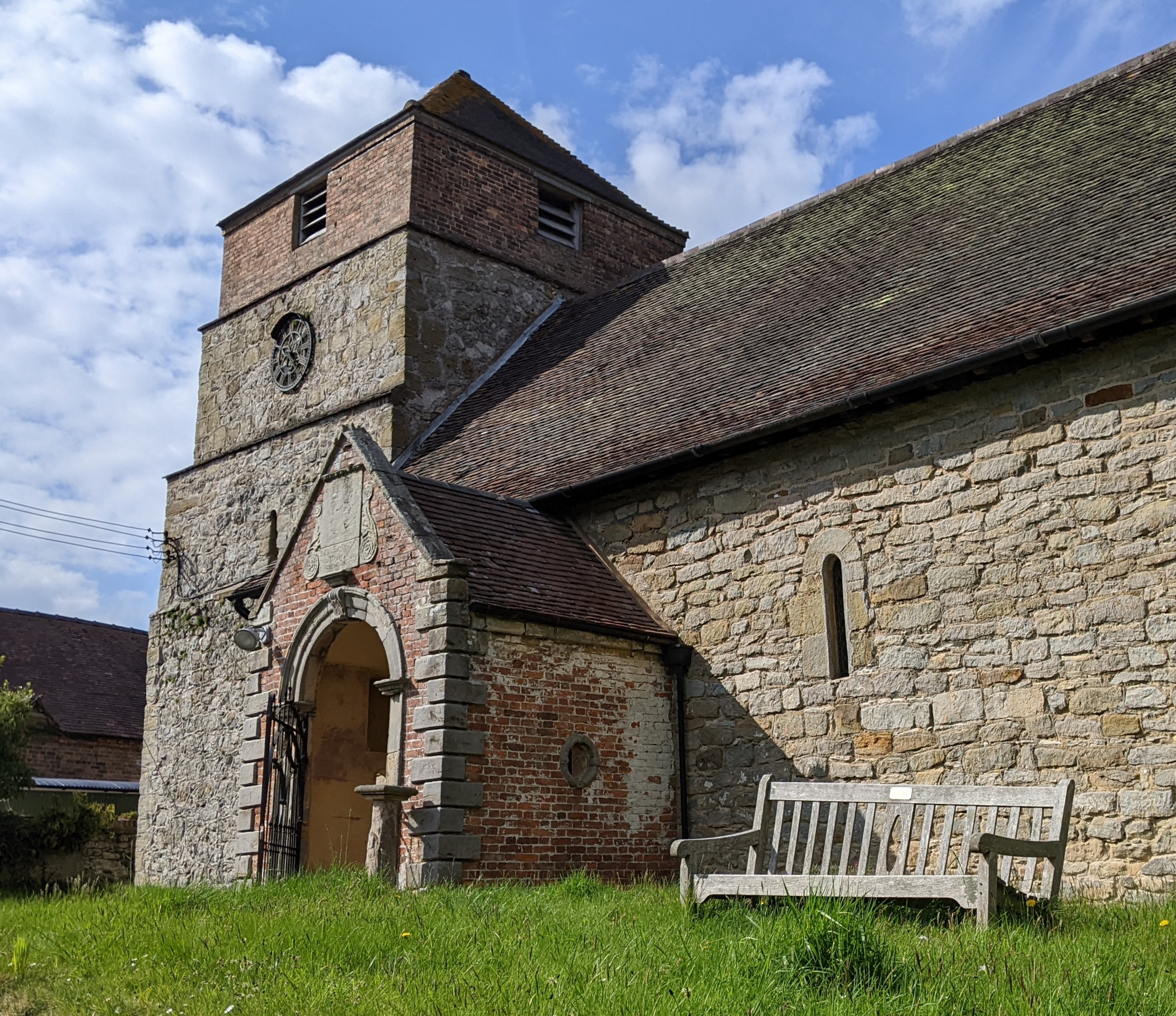
So as the Secretary of SCTG can I suggest you can find lots of history for the last 1000 of those years
in our church buildings, one in every village! Pick up a brochure from your local ancient building and
you will see more than 100 churches with lots of history, the stories of our ancestors. Step through a
few of the doors and support those who are caring for these buildings for us all. It’s a nice day out, too.
Anni Holden Calver, Secretary of Shropshire Churches Tourism Group (SCTG)
www.discovershropshirechurches.co.uk
Trustee of Caring for God’s Acre and Churchyard Task Team cheerleader!
www.caringforgodsacre.org.uk
pic, the largely Saxon church of St Giles, Barrow.
July
So what am I going to write about for in Jul?. My first idea was to see what poets might
have to say about the seventh month. The answer was nothing. Lots for May and June and August
and even September, but not a verse could I find for July.
So what next for this month? Being a religious journalist, saints sprang to mind. St Swithun, I have
written about before, buried in Winchester Cathedral leaving this earth in 862. And even today we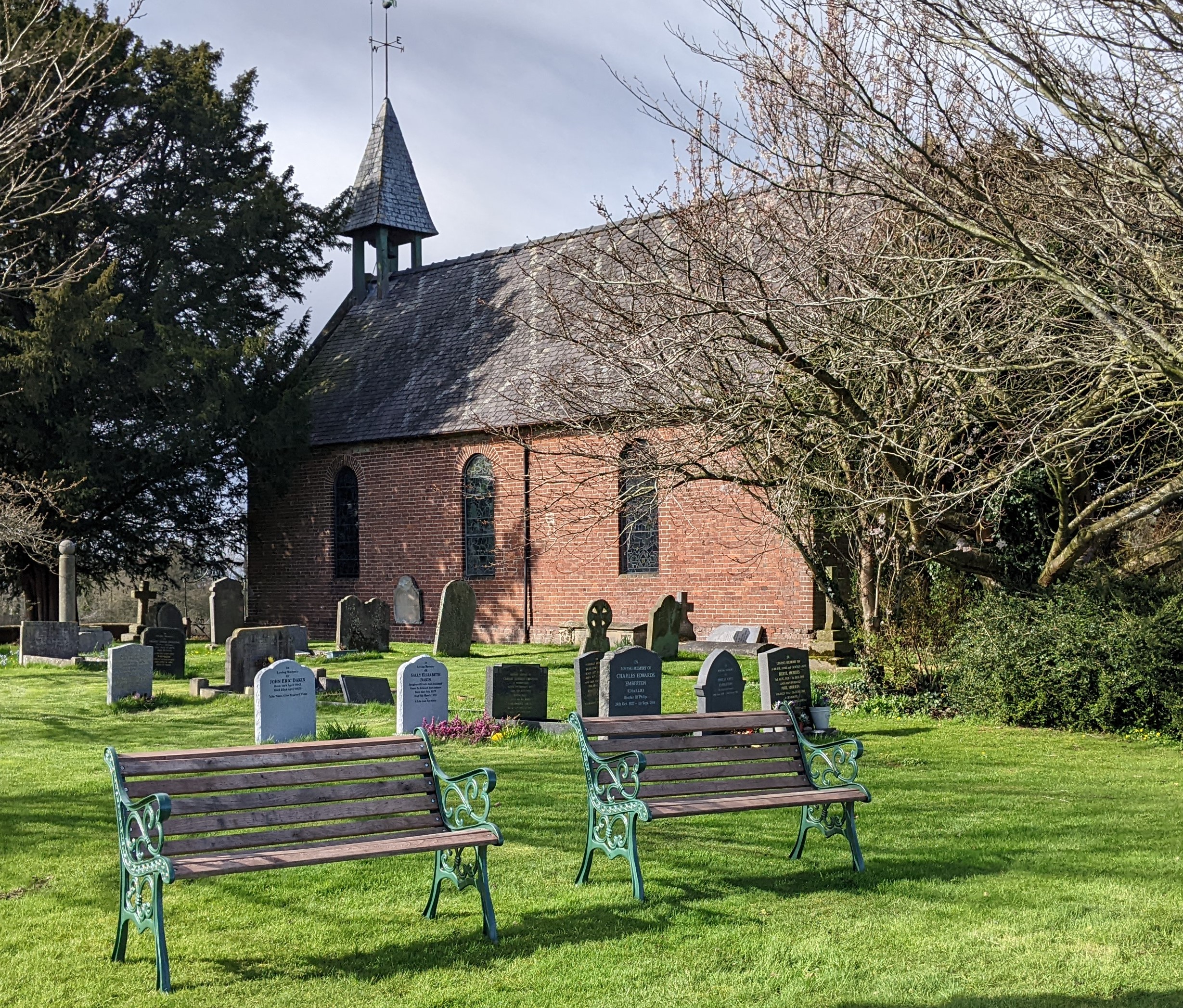
worry if it rains on his feast day. Other noteworthy saints (or people we have heard of!) include St
Mary Magdalene on the 22 nd . Often depicted clutching a pot of ointment, her cult began with fervour
in the 8 th century. In England she was so popular that at least 187 ancient churches are dedicated to
her. (3 SCTG* buildings have her name). A couple of other saints are St James on the 25 th , very
famous today for his home in Santiago de Compostela in Northern Spin, now a very popular pilgrim
destination. The following day is St Anne, the mother of Mary, the mother of Jesus, a very sparse
dedication for churches - no idea why? The picture shows a church with an unusual dedication:- St Raphael and St Isidore, Petton.
So what next for July? I started looking in some history books. We have on the bookshelves a very
large and heavy book called CHRONICLE of the 20 th Century (that’s how it’s written) . All sorts of
things happened in July although most of the stories from all over the world are probably long
forgotten. However here are a few that might resonate. In July 1901 Rudyard Kipling spoke out
against the Boer War “We have 40 million reasons for our failure but not one excuse” He could be
saying that today I think. On a lighter note Picasso ventured into Cubism in 1907 and Baden=Powell
started the Scout Movement with 21 boys. Back to war, a young Serbian opened fire in Sarajevo, the
first shots of World War I. In 1925 the Scopes Monkey trial came to an end with John Scopes
conviction for teaching evolution. It was a week after the publication of Mein Kampf! 80 years ago
the Allies were advancing after their June arrival in Normandy. Fortunately by 1948 (the year
George Orwell wrote 1984) the Olympics were taking place in London, an event we repeated in
2012. I got quite absorbed in all these happenings.
By the time you read this, you will probably have made your mind up about what you might do to
get July 2024 off to a start. Yes, 4 th July will be a big celebration in the USA as they celebrate their
Independence from Great Britain. Meanwhile we will all be trotting off to the local school or village
hall to cast our vote in the latest General Election. Bit exciting for me as my son is a candidate - no
not locally at all, but it’s a new experience for me, never mind whether he gets elected or not.
What I want is peace and love but maybe that’s the old hippie coming out. Do not forget to vote if
you do not have a postal one. We owe it to all those who fought for our democracy. I am writing this
on D.Day.
*Shropshire Churches Tourism Group - check the brochure
Anni Holden Calver, Secretary of Shropshire Churches Tourism Group (SCTG)
www.discovershropshirechurches.co.uk
Trustee of Caring for God’s Acre and Churchyard Task Team cheerleader!
www.caringforgodsacre.org.uk
JUNE
Recently I was in Brittany and what a special place to be. We have been before but for the first time we visited the Department (County in English) of Finesterre - the end of the
earth! (in English). It was stunning landscape, especially the ‘mountains’ the highest land
in the County, with the remnants of the ice-age and the huge boulders that have formed
these hills. And through it all runs water.
Even more recently, I was in Stoke St Milborough with the Churchyard Task Team, the
Caring for God’s Acre group that works all over the County, looking after the unique
environments that are our ancient churchyards. I worked hard, scything and raking, but I
did sneak off at one point to visit the Holy Well dedicated to St Milburga. It’s just around
the corner from the church dedicated to her. I took some pictures of the water gushing
and tumbling over the stones. The sound, accompanied by bird song is exquisite.
It brought back a memory of Brittany and got me thinking about the sound and power of
water. Our lives are totally dependent on this natural asset. In medieval times, these
Holy Wells were famous and many miracles were attributed to them. They were the
tourist attractions of their time! There is another Holy Well dedicated to Milburga, the
Abbess of the female Priory alongside the male Priory, in the town of Much Wenlock.
She was a very powerful Anglo-Saxon woman in South Shropshire.
St Winifred’s Well near the village of Woolston , not far from Oswestry is a special one.
 The cult of Winifred lasted for centuries; a medieval woman we know nothing about.
The cult of Winifred lasted for centuries; a medieval woman we know nothing about.
But that need not spoil a good story! Her suitor Caradoc, was so angered by her
rejection, he cut off her head. Fortunately St Beuno, a relative of hers, restored her to
life and where her head hit the ground, a well sprang up and is still there today in Wales.She lived a peaceful life as a nun in a number of Welsh convents until her death
Her body was dug up in about 1138 and her bones transferred to Shrewsbury Abbey, resting overnight near Woolston. As she left, a well sprang up and again is still there for you to visit.
There is also St Oswald’s well near the parish church dedicated to him in Oswestry. The well is a short walk from the church.
Other wells include St Julian’s in Ludlow and the one at Hope Bagot, not dedicated to anyone, but I bet those tourists turned up at this Norman building, small but delightful,
and today a flower meadow for a graveyard.
Anni Holden Calver, Secretary of Shropshire Churches Tourism Group (SCTG)
www.discovershropshirechurches.co.uk
Trustee of Caring for God’s Acre and Churchyard Task Team cheerleader!
www.caringforgodsacre.org.uk
May
So here we are in May but I am going to tell you about something I did last month which cheered me up and was a good day out. It was the week leading up to Easter and I was responsible for 3 of my 7 grandchildren. We had some plans in place including swimming, a walk at a local National Trust place they are familiar with, baking with Granni and the big day out - this time we had train tickets to Oxford and a booking for an art exhibition.
Needless to say, it was raining when we set off around 8.30am and was still raining when we got off the train after 11am. We abandoned the walk around this ancient University city and headed straight for the Ashmolean Museum, which was warm and dry, especially after we left our wet coats in the lockers provided. So where do we go now?
The grandsons are 11, 9 and 7 years old. The eldest one is as keen as me on art and we had ticket entry for the brand new Bruegel to Rubens exhibition - but not until the afternoon. So we picked up some maps of this mind-blowing building and had a chat. Isaac was happy for his younger brothers to choose and off we went to Egypt.
It was fascinating as we wandered through the origins then the dynasties that made up ancient Egypt.
The highlight was the CT scan of the Mummy of Meresamun on display in a very ornate nest of coffins but with a screen nearby, from a local hospital showing us all what was inside. - the body of Djed-djehuty-iuef-ankh (No I do not know how to pronounce it!) better known as Jed.
But for me it was the everyday artefacts that brought a lump to my throat. There were the pieces of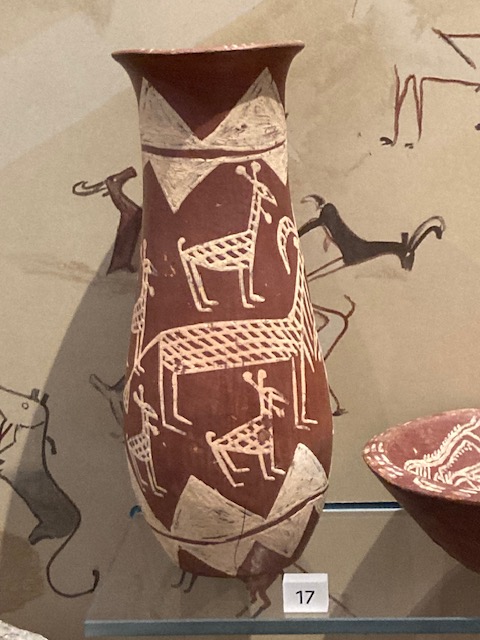
a jug. The top of the jug with the spout, a piece of the handle and some others obviously from the same jug (see picture). But what amazes me is that the maker of the pot has bothered to decorate what was obviously usable without added pictures. But the human spirit pushes that person forward and makes it more than just a jug. As the Egyptians got more sophisticated so did their artwork on every day pottery.
And it’s the same in all peoples, Indian, Japanese, Africans, Europeans of every sort and Anglo-Saxon England. Another highlight for me was seeing the Alfred Jewel, made for the Great King himself, sometime between 871 and 899, unearthed by a farm labourer on a peat moor in Somerset
in 1683. What amazing work had gone into that beautiful jewel. Human spirit again.
So inspired, the boys and Granni and Grandad will be back in Oxford at half term to see what else can entertain us - China perhaps.
Anni Holden Calver, Secretary of Shropshire Churches Tourism Group (SCTG)
www.discovershropshirechurches.co.uk
Trustee of Caring for God’s Acre and Churchyard Task Team cheerleader!
www.caringforgodsacre.org.uk
APRIL
April is often a lovely month, the daylight is longer, the weather a bit warmer and there’s the possibility of some sunshine. The tourist season has started too. Easter is what starts it off, so is your church looking clean and tidy and welcoming to anyone who might venture through your door?
Simple things make churches welcoming, the best of all being flowers. They brighten up the building, flowers bought, wild or from your garden. Many churches now have visitor counters and contactless giving machines. The recent Heritage Lottery project provided many of them and it is paying off.
Those churches have real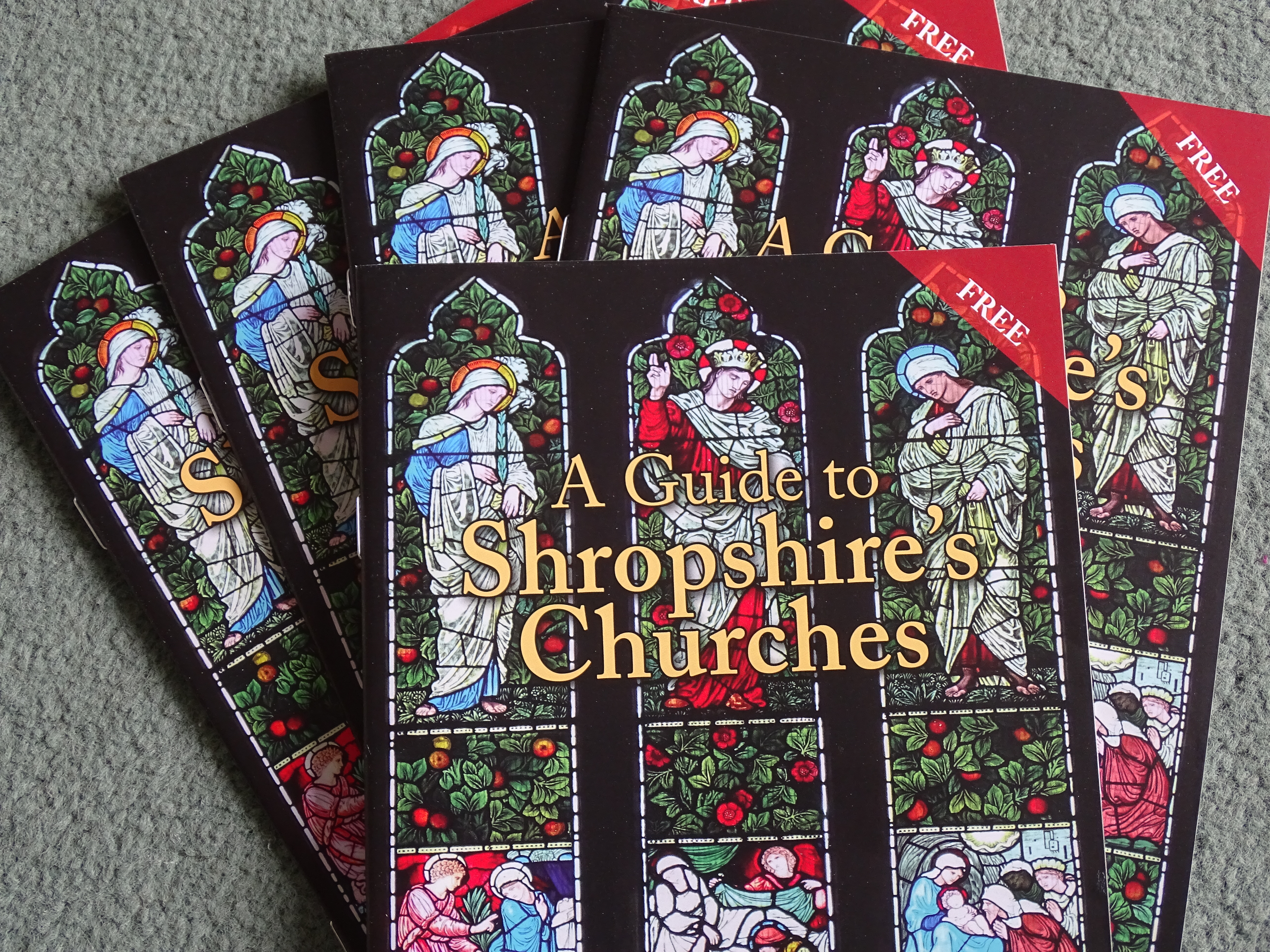 ised that many more people walk into their churches than the visitor book
ised that many more people walk into their churches than the visitor book
shows and contactless giving makes it easy for people to donate. And they do!
Shropshire Churches Tourism Group (SCTG) has lots of ideas on its website for welcoming visitors.
This is also the year when, if your church is not a member, you can join. Sign up for £60 for 3 years
membership. You will be featured in the next brochure which will be printed next year (2025/year 2)
which will be available for 3 years. 30,000 brochures are printed for distribution around churches, visitor information centres in the County and surrounding ones, major visitor attractions where possible and any other relevant place we can think of. You will have a church page on the website: promotion on Facebook and Instagram: special events advertised widely. There are opportunities to learn more about pleasing visitors and help when you need it. We are planning day trips to some member churches each year too.
April might also be the month you turn up to see what the Churchyard Task team are doing in a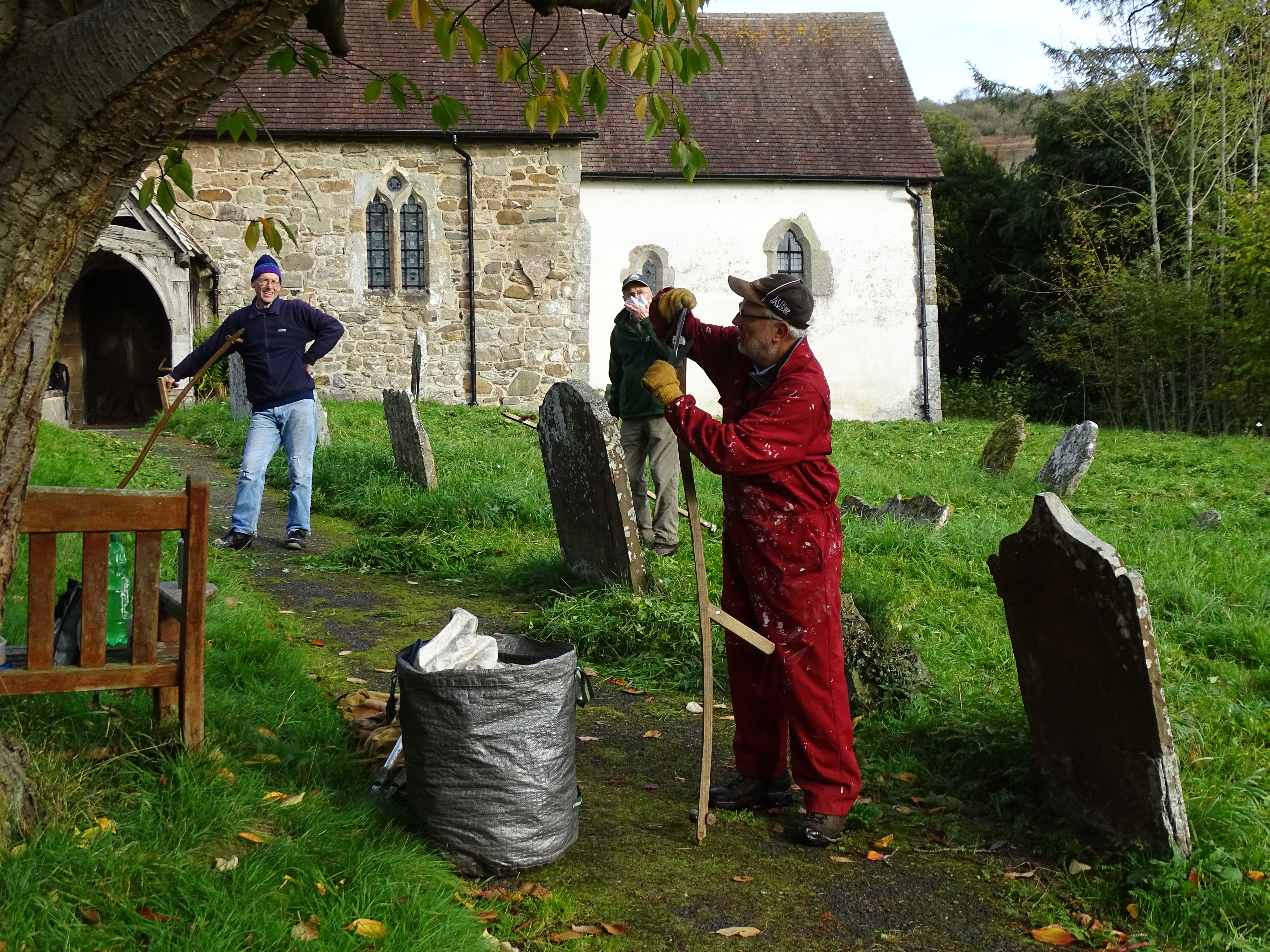
churchyard near you. It’s a sociable thing to do, it’s good for your health to be outside and you are
contributing positively to the environment. There are lots of different tasks to do like cutting back,
building habitat piles and taming the ivy to name but a few. I cannot believe that since retiring I have
learned to scythe, can have a go at laying a hedge not to mention constructing a dry stone wall - not
what I had planned for my retirement but what a privilege. We always like to see local people when
we are working in your churchyard and cake is always welcome!
Churchyard Task Team - Dates for April 9 th Burrington, 11 th Ford, 16 th Caynham, 18 th Montford, 23 rd Bromfield, 25 th Kinnersley Cemetery, 30 th Cressage.
Anni Holden Calver, Secretary of Shropshire Churches Tourism Group (SCTG)
www.discovershropshirechurches.co.uk
Trustee of Caring for God’s Acre and Churchyard Task Team cheerleader!
www.caringforgodsacre.org.uk
Above: The Churcyard Task Team at Hope Bagot.
MARCH
THAWING
Over the land freckled with snow half thawed
The speculating rooks at their nests cawed
And saw from the elm-tops, delicate as flower of grass,
What we below could not see, Winter pass.
Here’s a poem by Edward Thomas. It only comprises 4 lines but I think it’s very
clever, reminding us that other species can have the edge over us humans. Edward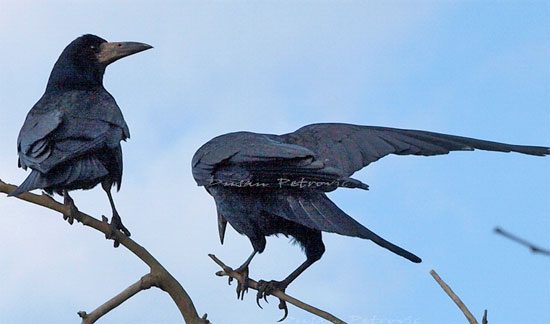
Thomas (a favourite poet of mine, probably because my dad was fond of him)
enlisted in the First World War in 1915 and was killed in 1917 at the age of 38.
He had been part of a group of poets called The Dymock poets, Dymock being a
small village in North Gloucestershire, close to the Herefordshire border; other poets
included Robert Frost, Rupert Brooke, another sad loss in WWI, and Eleanor
Farjeon. The death of Thomas saw the disintegration of the group.
But back to Thawing, as the poem above is called. I was in Stanton Lacy recently
enjoying the annual carpeting of the churchyard by thousands of snowdrops and still
worth a visit at the start of March.
My recent trip to Stanton Lacy offered more than snowdrops. From the sky above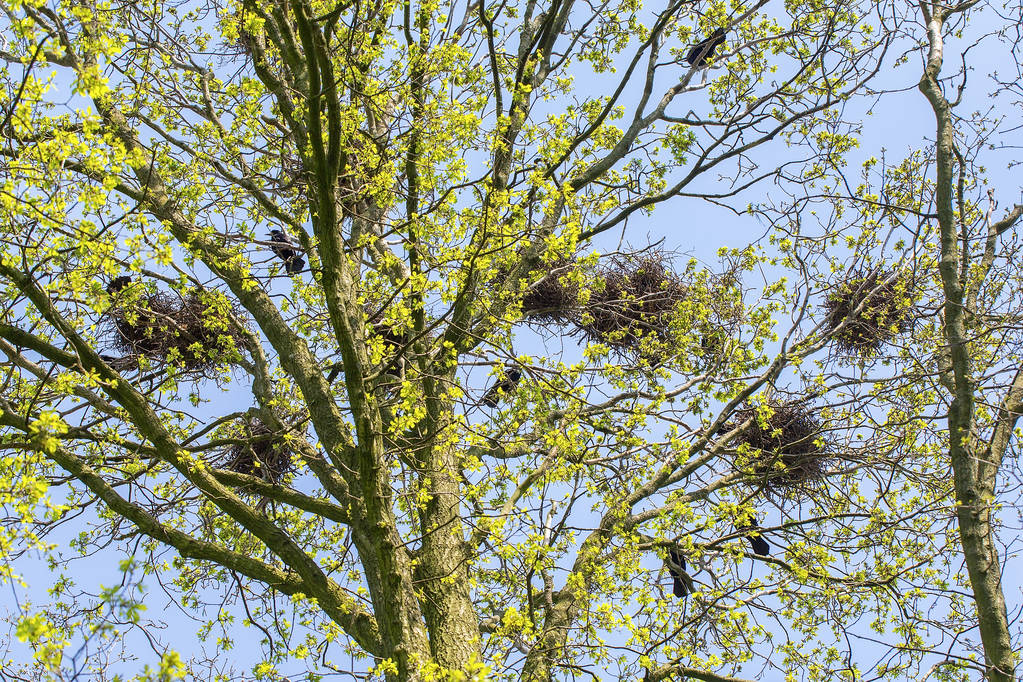
the trees in the churchyard, came a cacophony of noise. The rooks were preening
themselves as they landed on the high branches hoping to attract interest from one
of the female rooks, perching nearby and looking coy. (I had binoculars!
Many rooks were already paired up, and they pair for life. They are also very
sociable, forming large colonies and returning to their chosen nesting places each
year. Rooks are very sharp when it comes to building. A bit of warm weather and
they are collecting twigs. As we know this January was the hottest on record so by
the end of February the nests will be ready for eggs. While building and renovating
some from last year to use again, these intelligent birds do not need a DIY shop,
they just work together and create nests for all. This month, they will lay about 3- 5
eggs and baby rooks will leave the nest next month. They will stay close to Mum and
Dad until autumn when they will join the colony as they stay together in their winter
lodgings.
Edward Thomas’s little poem sums up the activity and the racket that rooks can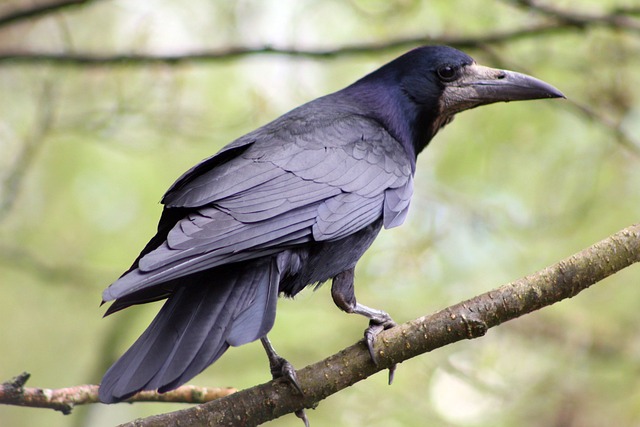
make. But he also points out that they know more than us humans. They rise above
us in flight and can see before we can the weather that is coming. The subtle way
the poet enjoys the role of the rooks here is lovely. They take it for granted; they
know that winter is gone. From their point of view Winter is well on its way out. They
may not know it's March, but they know Spring is arriving and they are ready for this
new season. Shall we humans join in?
Anni Holden Calver
Trustee of Caring for God’s Acre and member of the Churchyard Task Team
Secretary of Shropshire Churches Tourism Group
February
Song of Songs
For lo, the winter is past
The rain is over and gone;
The flowers appear on the earth;
The time of the singing of birds is come
And the voice of the turtle dove is
heard in the land.
I know it’s still only February but I find this short quote from the Second Song in the Songs of Solomon (a book found in the Bible) comforting. A short message of hope for better things to come, at least the weather if not the world situation. I’m hoping that by the time you read this the world will be a safer, happier place than it has been lately.
I keep telling myself I have to adapt and move with the times. If you remember last month’s offering, you will know I was resolving to be a nicer person in the New Year. So far I think I am doing alright. I love offering a “good morning” to a passing stranger. In most cases people respond cheerfully too. You get a beaming smile and sometimes a comment on the weather - just a small thing to do, but it’s making me feel better every time. I recommend having a go.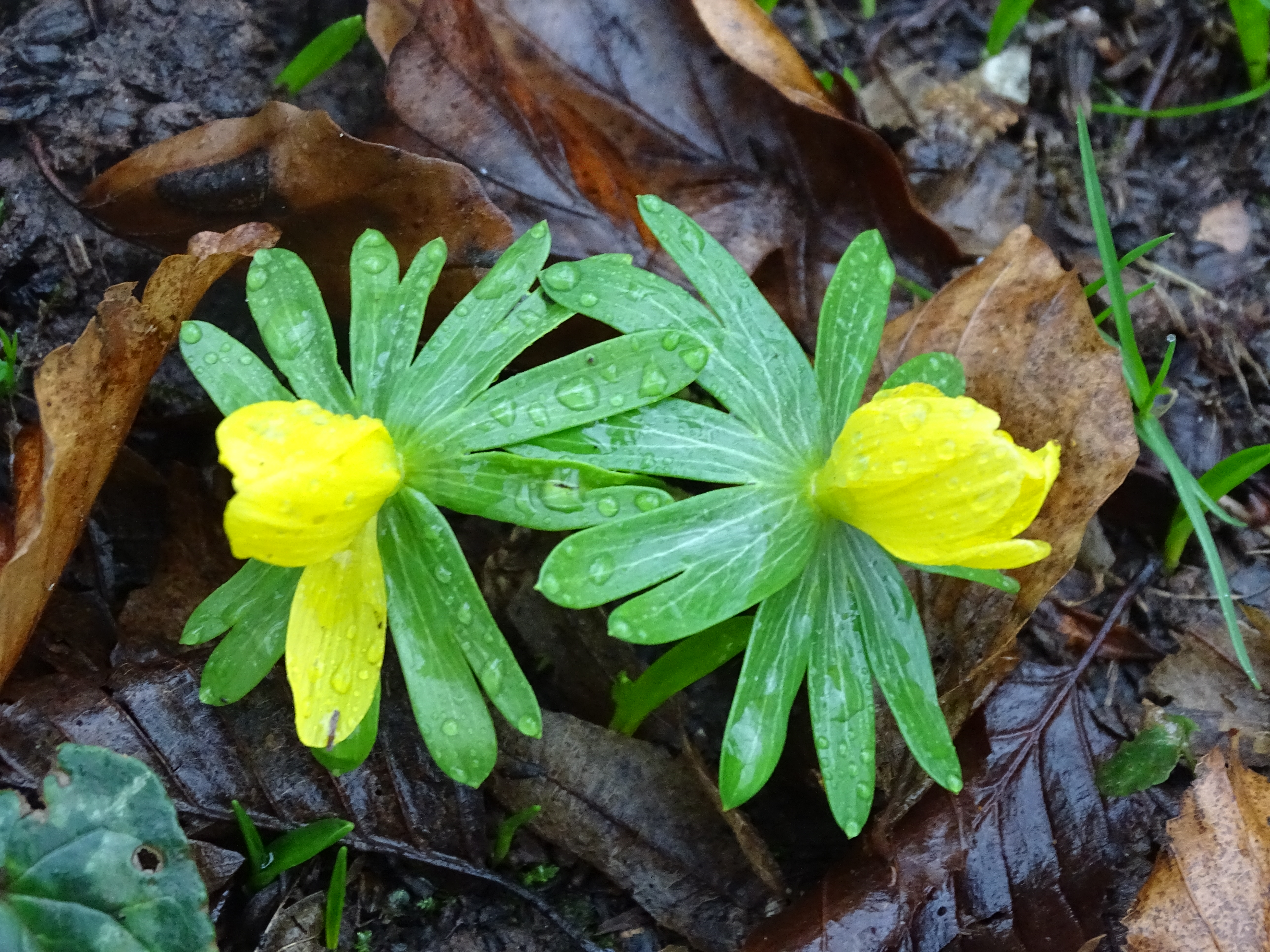
I think in winter we all get bit grumpy. There is not enough light in the day. I know the
days are getting longer but it’s not quick enough for me.
A couple of years ago at this time - or was it before COVID? - I was feeling a bit down. Ipicked up my camera and visited a local open garden to see if I could find something
colourful to photograph. I found 10 different plants in flower! I have had snowdrops in
 my garden since the middle of January, but that year I found hellebores, winter flowering honeysuckle, primroses in sheltered places, winter aconites as well as the expected crocuses and more besides. We can learn a lot from the natural world around us and often it is good news. The plants had to put up with rain and floods just like we did, as did all those small mammals that live in our countryside. They seem to be recovering so perhaps we can follow?
my garden since the middle of January, but that year I found hellebores, winter flowering honeysuckle, primroses in sheltered places, winter aconites as well as the expected crocuses and more besides. We can learn a lot from the natural world around us and often it is good news. The plants had to put up with rain and floods just like we did, as did all those small mammals that live in our countryside. They seem to be recovering so perhaps we can follow?
So our little part of the 2 nd Song of Solomon addresses the flowers and I think we can all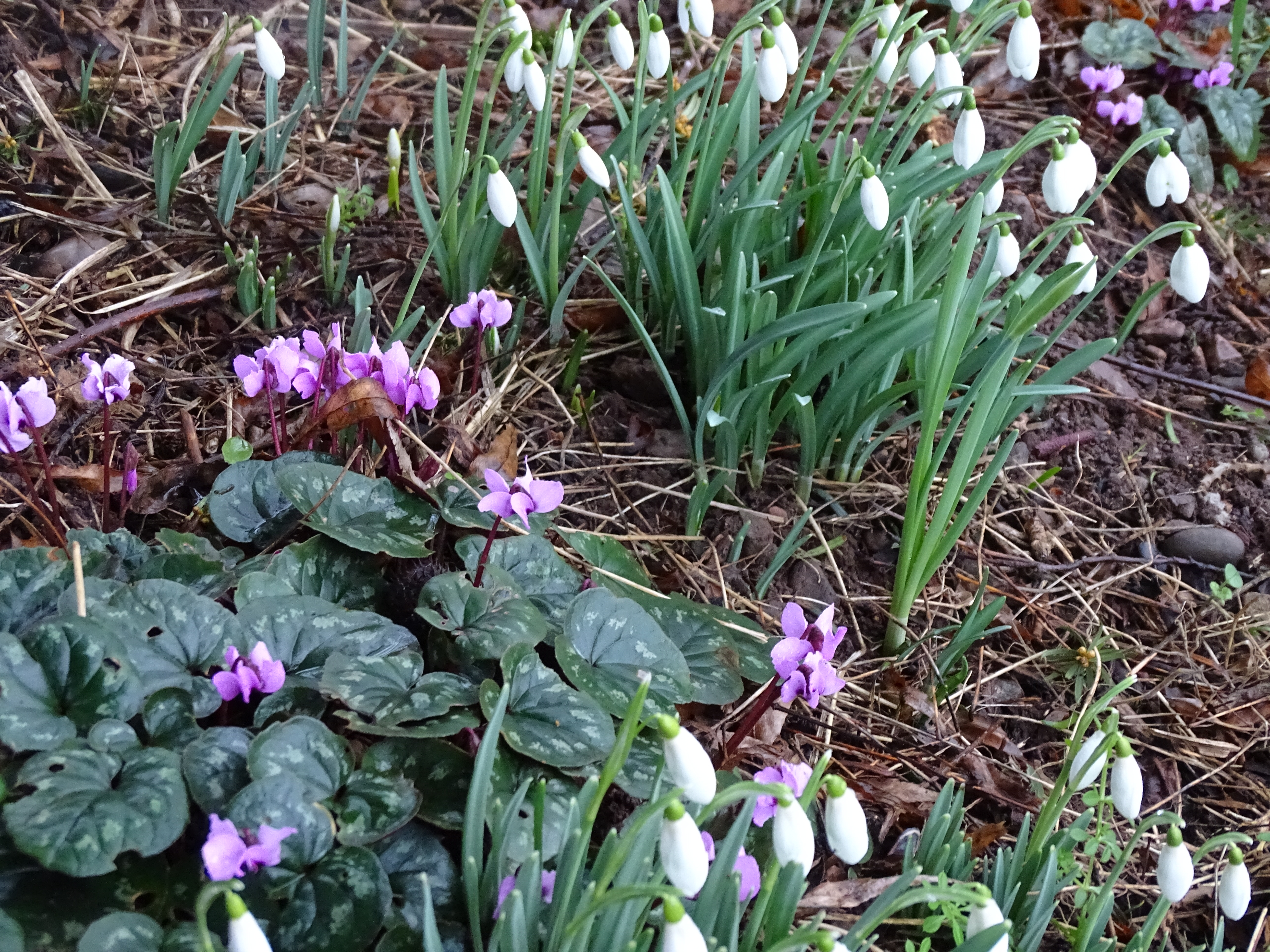
agree that the birds are singing again. St Valentine’s Day, 14 th February, is the date in medieval times that birds paired up, so they should be making plenty of song before the end of this month, something to look forward to. It may not be turtle dove locally. It’s more likely to be the local wood pigeons or occasionally collared doves if you are lucky, calmer than the pigeons!
Anni Holden Calver
Trustee of Caring for God’s Acre and member of the Churchyard Task Team
Secretary of Shropshire Churches Tourism Group
January:Its January, so HAPPY New Year 2024 First thoughts have got to be resolutions -
but hey , lets park them until later and find out more about this month. The
celebrations in years gone by went on until Plough Monday , the first Monday after
January 6 th , the Twelfth Day of Christmas, when it was time for all good men and
women to get back to work. The shoots of St Stephen’s day (26 th December) were
just memories, the bells had rung in the New Year, and many a dark haired man had
waltzed through a house bringing good fortune for the coming year, 12 th Night had
been wassailed away as fires burned and it was time to return to the land with a
vengeance. The year depended on it.
I feel exhausted just writing that as it seemed to go on for so long. It leads me to
thinking about our New Year. It’s 2024 already, and I’ll be a year older by the end of
this month. So what sort of year are we going to have? I think last year could be
described as turbulent - and I don’t just mean the weather!
I think it’s time to calm down and concentrate on being a nicer person. I would love
to be a kinder person and I think I need to start trying harder before it is too late. It
means being more positive , not constantly seeing the negative in every situation,
but accepting the way things are. This could mean not getting irritated with those
who don’t agree with me or you. This is hard if it’s an issue close to our hearts. Got
to be worth a try though I think
I am going to try to more generous in 2024. I am going to look at my charitable giving
and see what I might change and/or uprate. A small amount more from those of us
who can, could add up to a big amount for our favourite charities. I am also hoping
to be more generous to people too and try not to be judgemental. Thanking others is
good too. I have discovered that if you thank those who stop at the crossing, whether
because they have to or if they choose to, if you give them a cheery wave of thanks
and mouth “thank you” as you cross in front of them, you get a cheerful response.
The age or gender of the driver is not relevant either. People enjoy the brief friendly
exchange and so do I.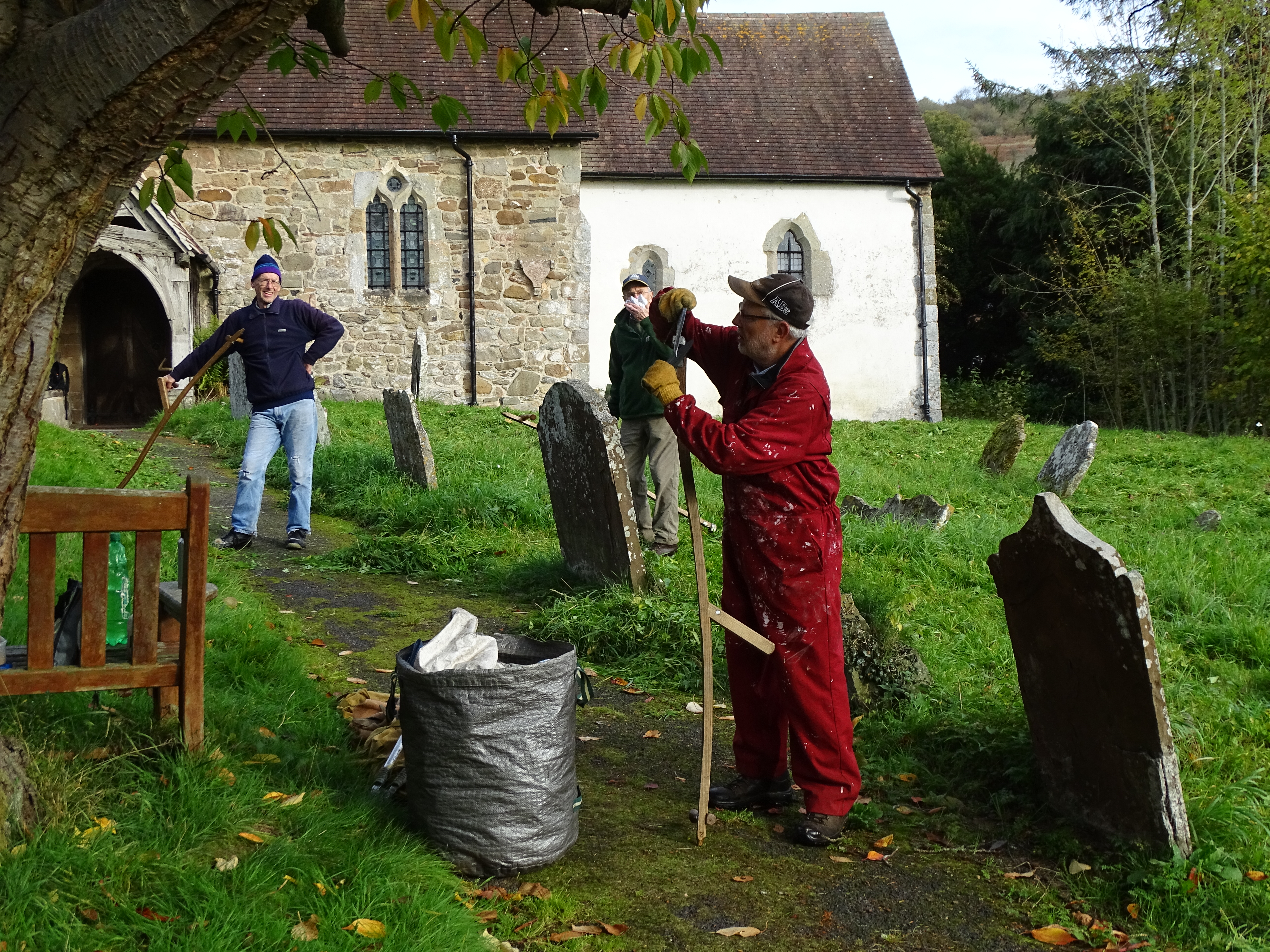
A suggestion to finish: in 2024 consider joining the Churchyard Task Team in the
fresh air one day a week. We are a happy and sociable team. We are privileged to
have some stunning buildings as our backdrop to our tasks. Check out
https://www.caringforgodsacre.org.uk/about-us/conservation-volunteers/
and contact Alex.
Anni Holden Calver
Trustee of Caring for God’s Acre and member of the Churchyard Task Team
Secretary of Shropshire Churches Tourism Group
St John the Baptist, Hope Bagot.
December: Winter in the Churchyard
The Churchyard Task Team works until the first week in December. The following week we
enjoy a Christmas lunch at a local pub and then we take a break. We return in the second
week of January…and each time we do, it always feels different.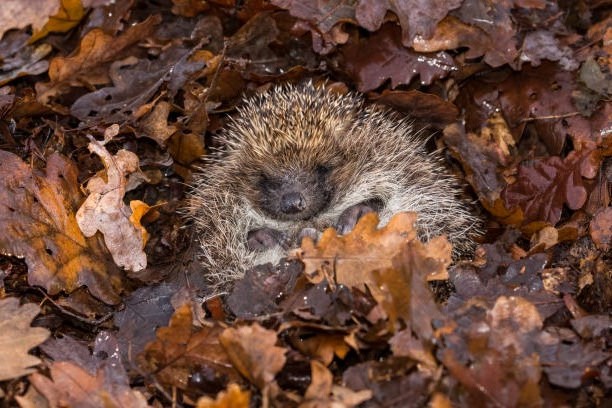
While we have been away, the winter has stripped even more leaves from the trees, nothing
has grown, the hibernators are still asleep and all is very still. It is a chance too for you to
take a closer, or do I mean clearer, look at the area that is the church and churchyard.
The gravestones stand out more starkly in the winter light. Have a look at the wall. If it has
been there for a long time, it will be a dry stone wall, one that has been built by careful
selection of stones and no mortar or cement to hold it together; it is after all this time as solid
 as the rocks that make it. A little later wall (couple of centuries!) and it may have a lime
as the rocks that make it. A little later wall (couple of centuries!) and it may have a lime
based mixture holding the stones in place. This made it easier for the builder as the selected
stones could be stuck together, a wider collection of shapes and sizes too.
Many churches are built on mounds and if roughly round are likely to be places of earlier
pre-Christian origin. As far back as Bronze Age times (5000BC - 800 BC), historical
evidence shows us that burial places or barrows as they are called, served not just as burial
sites but combined communal, secular and religious/spiritual purposes too. When
Christianity arrived in Britain, the then Pope, Gregory 1 st , instructed his missionaries very
carefully, telling them to be sympathetic to previous religious practices and to build on them
and not destroy. And so our present day church buildings in Shropshire and surrounding
counties, most of which are around 1000years old, are built on older spiritual sites. If your
parish church is mentioned in the Doomsday Book (1086AD) you can almost guarantee your
site is older than Christianity.
While you ponder what you see before you, remember that despite the peace, an awful lot is
still going on. Those that choose to hibernate, dormice, hedgehogs and bats, all possible in
your churchyard, spend winter in deep consciousness but also moments of light inactivity. It
is a survival technique. Other small mammals, like shrews, slow down, hunt less and sleep
more. Badgers do something similar but they are not small! Some insects, butterflies,
ladybirds and some bees, overwinter in a state of torpor but can occasionally be roused on
bright warm(ish) winter days. Frogs, toads and newts all change their behaviour as soon as
the frosts start. They look for secluded spots to shelter from the elements. Compost heaps
are very popular with slow worms! So lots of life there, but it’s just not obvious.
But come the New Year and change will start creeping in. But in the meantime have a very
happy Christmas.
Pics: Top: Hibernating hedgehog
Middle: Culmington dry stone wall.
Bottom: Bromfield lichens.
Anni Holden Calver
Trustee of Caring for God’s Acre and member of the Churchyard Task Team
Secretary of Shropshire Churches Tourism Group